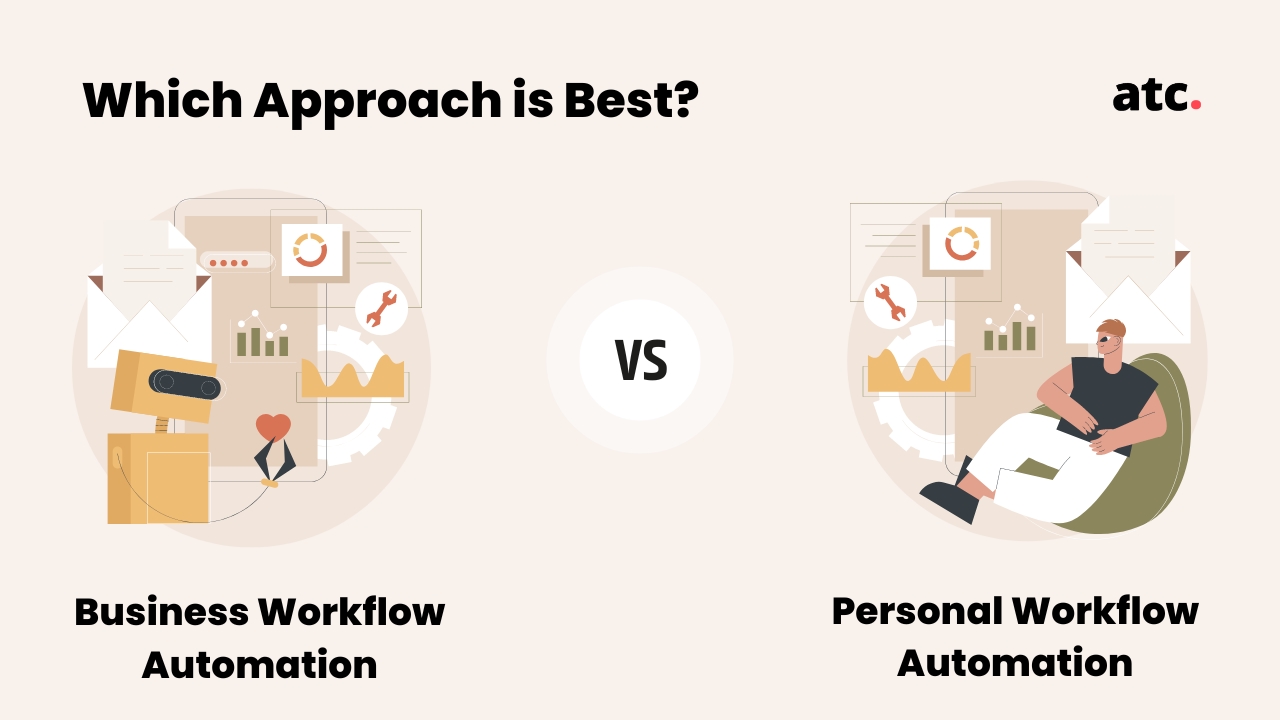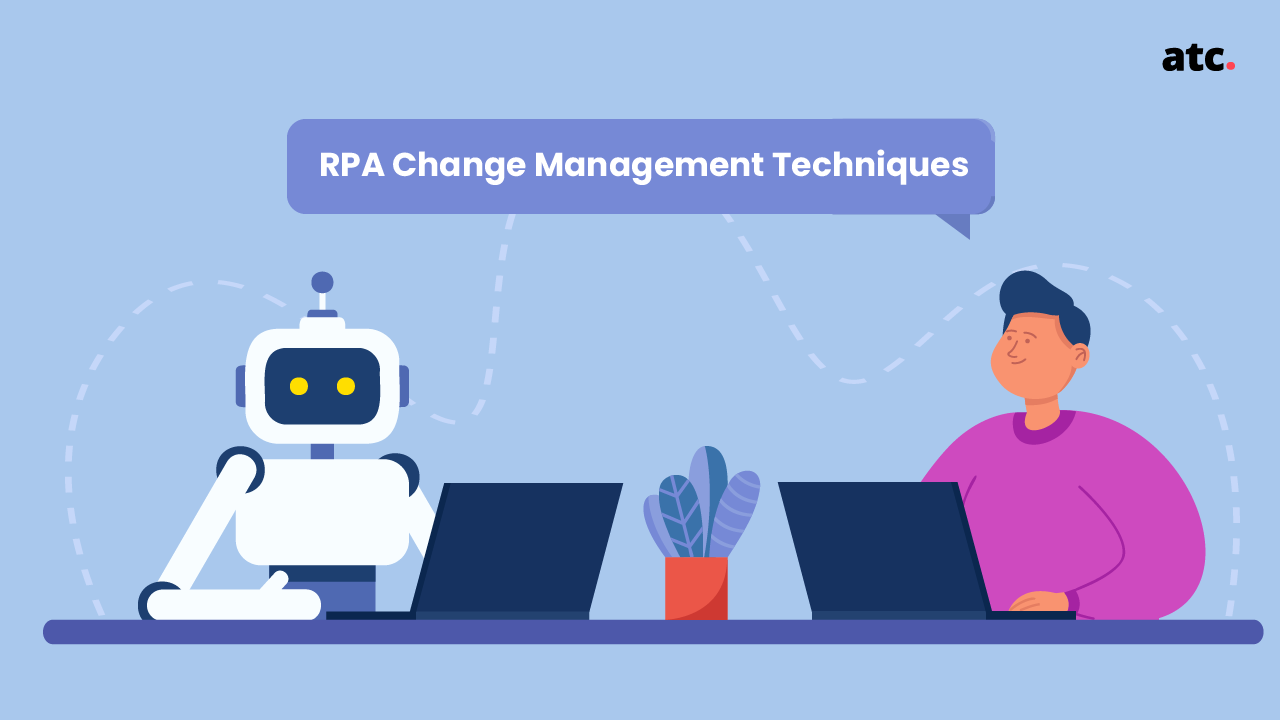Subscribe to the blog
Robotic Processes Automation (RPA) is a software technology that allows anyone to automate digital tasks. These tasks, usually repetitive in nature, are easily carried out by a bot that is trained in the rules of the tasks. The bot follows the rules and then executes the tasks, replacing human effort. This frees up human resources for more creative work that requires analytical or problem-solving skills. This can seem very liberating: delegating your mundane tasks to an RPA bot that will perform the same with speed and accuracy.
But it’s important to understand that RPA-led automation is not a magical solution for all automation needs of an organization.
What is RPA?
RPA bots are trained automation tools that learn to perform rules-based activities like completing the right keystrokes, navigating database systems, extracting data, and processing such data. Just like human beings, RPA bots are able to give you answers. The difference is that RPA bots do so with a professional level of accuracy and consistency. On the other hand, an RPA bot providing you answers cannot replace the empathy that is usually shown by human beings in such processes, especially if human interaction is involved.
Take the HR function of employee onboarding, for instance. This HR function aims to integrate a new employee into the company and its culture. The employee is also familiarized with the tools and information needed for a productive transition into their new roles and jobs. Normally, this can be a labor-intensive process. HR members are involved in streamlining and coordinating everything whereas the IT analysts are setting access rights, creating email addresses, and making other digital provisions for the new employee.
All these processes are repetitive for each employee onboarding and governed by certain pre-decided rules. RPA bots can be taught these rules and they can be assigned the responsibility of a smooth onboarding experience. The bots can share notifications, documents, contracts, etc. with the new employees.
The only thing it can’t emulate is the human element: it cannot connect the new employees with other people or break the ice between the team members.
What makes RPA deployment successful?
For many organizations, implementing or deploying RPA bots helps them provide better customer service as well as employee experience. Your RPA bot performs the functions it is instructed to perform. This means that the bot relies heavily on the data that is fed into the system. It can do repetitive work like logging into systems, moving data, files or folders, extracting useful information, filling forms, generating routine reports, etc.
Here’s a simple example, following from the employee onboarding case above. Suppose we provide the bot with a sequence of emails that are to be shared with the employees every time they sign and submit one of the employment forms. If, for example, we hire a consultant who needs to sign only 5 out of the 9 usual forms, the RPA bot needs to know this beforehand. We need to update the data to include a sequence of emails that correspond to such consultants. In the absence of such alignment or information, the bot will send out all 9 forms in the prescribed sequence, which will end up being counterproductive to our goal.
Depending on how well-trained the bot is, it can also perform slightly higher-level functions like text interpretation, chats, etc. One classic example of such RPA bots is the customer-support chatbot you usually see when you visit any website of a SaaS platform.
As a result of RPA bots performing these high-volume tasks and functions, human resources are free to do things that require their intellectual prowess, collaboration, creativity, and empathy. RPA can take care of the mundane stuff and help you achieve higher productivity and efficiency by focusing on things that benefit from your creative input.
There are other factors that influence the success of RPA deployment, including the project team competencies as well as the technology and implementation partners. All the stakeholders involved in the RPA deployment should be
- staunch advocates and believers in the power of RPA to save time and resources;
- solution-oriented so that they welcome the change RPA brings in.
Workflows also need to be revised in tandem with RPA implementation. No work should fall off the cracks. Redistribute work across the team after delegating all repeat tasks to the RPA bot.
Is RPA the ultimate automation solution?
Automation is permeating all sectors — from banking to business, from security to financial services. All industries are wholeheartedly embracing automation solutions. But is RPA the jewel in the crown of the automation world? Well, it depends on the data that RPA bots use to perform their functions.
This data comes to them from digitized papers, invoices, forms, etc. RPA reads this data collected from devices like scanners, computers, and so on. Digitization of such paperwork often involves image processing and the use of Application Programming Interface (APIs) or Optical Character Recognition (OCR), and then recognizing documents, extracting data from them, and validating these using rules-based approaches. Algorithms are involved.
One important aspect of understanding how data defines the RPA efficiency is through the example of dataset processing. Researchers working to train bots to identify misogynistic content, for example, have to struggle with context. They can tell the bot what language is sexist through a list of words and phrases, but there might still be more abusive words or sexist remarks that often seem innocuous. Someone saying, “go make me a sandwich” is laced with sexist connotations, but the bot may not pick it because it seems like a harmless phrase in isolation.
Another feature of an RPA bot is its accuracy. While it's true that the bot will be more accurate than human beings for the same function, its accuracy still depends on the data it uses as its source material. Bugs in the data may go unnoticed by the bot’s eyes. So additional checks and balances are required in the data, otherwise, the RPA’s performance is just as good as the data it understands.
Is hyper automation the answer to RPA efficiency?
Gartner defines hyperautomation as a model that helps to "rapidly identify, vet and automate as many business and IT processes as possible”. Hyperautomation acknowledges how data is the key to RPA’s performance. It aims to expand RPA’s context so that the bot can also engage in complex decision-making and analytics. This pivots RPA bots from administrative work towards complex business and IT processes.
In other words, hyperautomation lays the foundation for digital transformation using RPA. Not only that, hyperautomation also provides other benefits like better compliance, better accuracy in data processing, and so on.
If you are planning to go for a hyperautomation platform vendor or solution, explore your specific needs in terms of:
Chatbots: What interactive chat systems are available for users? Is it a multiple-choice or can conversational input be understood by the automation bots?
Scope: Is the platform empowering for business and IT both to leverage RPA technologies and automate as they see fit?
Data processing speed and reporting: How fast can the platforms process structured data? Can the platform generate reports?
RPA and data: A symbiotic relationship
Data drives RPA bots. As mentioned before, RPA can be considered “rules-based” software robots. These bots get manual instructions and datasets from developers. Thus, the RPA’s judgment is just as good as the data that is provided to it.
Automation is the buzzword and RPA is a widely discussed tool of automation. It mimics human actions and helps automate time-consuming processes. The promise of hyper-automation takes this a notch up and seeks to accelerate the pace at which automation is being adopted.
RPA implementation is usually very non-invasive, non-disruptive integration. Your predictable, routine, mundane tasks can be put on autopilot through these bots. But RPA will only give you benefits if your IT process, your database management and other workflows are well established. Automating a badly managed process will lead to counterproductive results. Thus, before diving headfirst into the automation bandwagon, make sure that you optimize your workplace for automation tools.
Final Words
For your RPA deployment to be a successful exercise, ensure quality standards across the organizational workflows. A combination of automation strategies — artificial intelligence, RPA, machine learning, etc — can potentially lead to better, watertight results.




